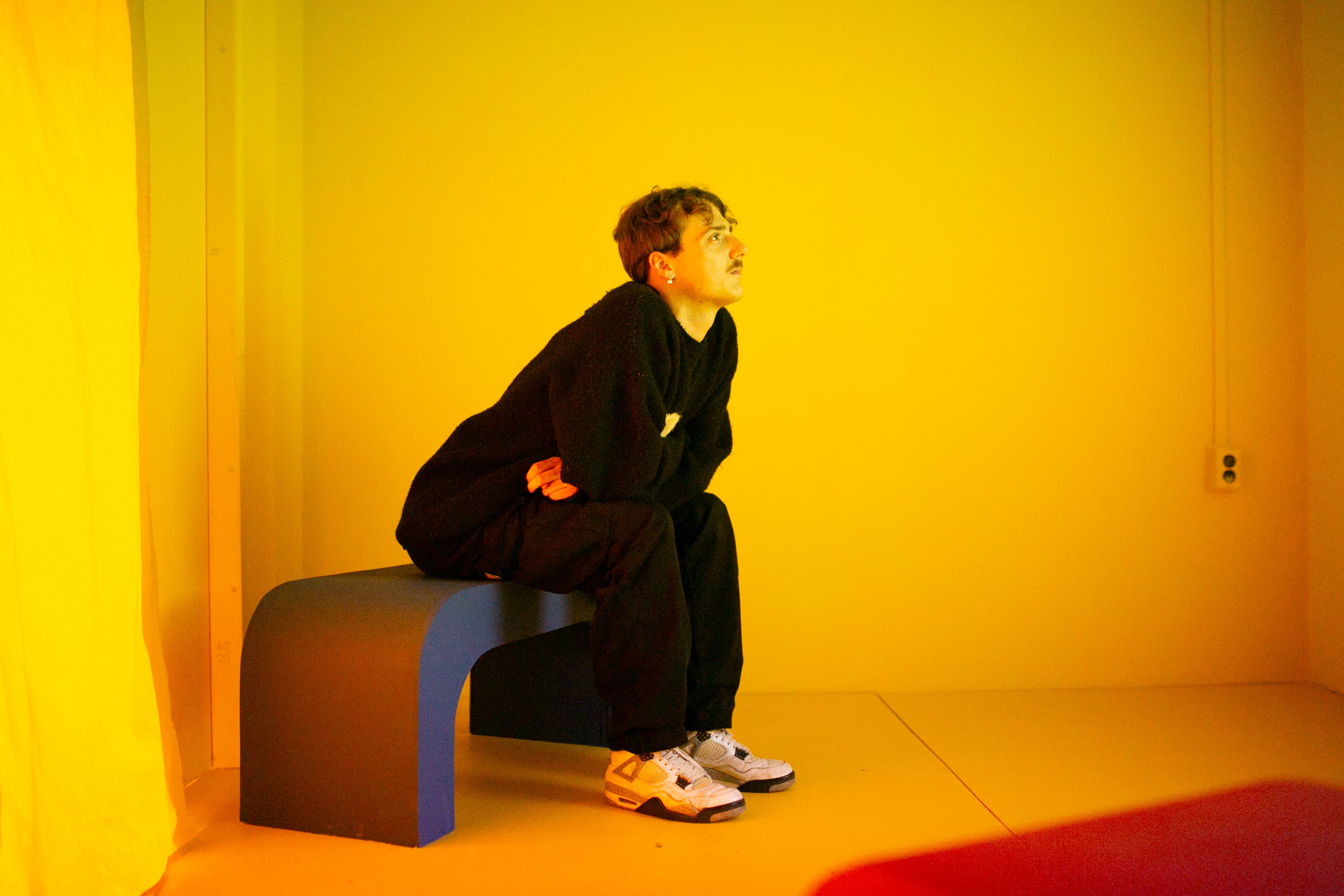The Silent Clowns
Slapstick is a world of small gestures with big consequences, of illogical cause and effect.

The Silent Clowns is an international group show taking slapstick and physical forms of comedy as its starting point. The title is derived from the film critic Walter Kerr’s book, The Silent Clowns, about the history of silent film comedy. The slapstick of black and white movies can be traced back to the 16th century theatre of Commedia dell’arte where Harlequin used a wooden stick (called a slapstick) to hit the backsides of fellow players for comedic effect. Another forerunner is Vaudeville theatre of the 19th century. The visual spectacle and physical nature of its acrobatic jokes meant this form of folk theatre comedy was ideal for adaptation to the silver screen. Slapstick actors like Buster Keaton and Charlie Chaplin used the antics and tricks learned on stage for their comic style of silent film. Today, there are numerous examples of slapstick comedy in contemporary popular visual culture: the films of Mr Bean or Jackass, or the many “fails” that can be found on YouTube.

Slapstick is the physical humour par excellence. Physical discomforts are magnified in clownish ways, or the body acts as a component, an inanimate prop, of visually spectacular stunts. Slapstick is a world of small gestures with big consequences, of illogical cause and effect. With their body as the main feature, slapstick characters are constantly struggling with the world around them. A world of conflicts, disasters and catastrophic transformation, a place where extravagant chaos prevails and where the whims of chance reign over all forms of logic. The protagonists are victims of circumstance and the laws of gravity seem to determine their destiny forever. Slapstick actors such as Buster Keaton can make fearless steps around this world, letting themselves get carried away by paradoxical forces of order and chaos.
Various forms of slapstick comedy seem to inform the artworks in this exhibition. The way in which Roman Signer conducts his experiments so that inanimate objects such as a kayak are brought to life, echoes Buster Keaton’s stunts and his use of very large or small props. Both examine the world around them in a fearless manner, so that failure is the rule rather than the exception. We‘ve invited the Dogs or $hame to make a new film for the exhibition. Their work is reminiscent of humorous skits from the early years of silent film, where all kinds of props were used for practical jokes. Subtle works, such as Gerard Herman’s Ongestraft (Impunity), shows slapstick as something characterized by graceful innovation beyond the clumsy and chaotic. The artist temporarily revives initially lifeless objects for works characterized by a sort of absurdity. This lies in the contrast between the effort he applies and the purpose of his actions. The jokes or events have no goal except the event itself. The failure is no longer a failure, but a comic spectacle.

MAMA also asked Williem Claassen to create an installation to fill one of the exhibition’s spaces. Alongside the participating artist’s video works will be a selection of material ranging from early 20th century black and white slapstick films to amateur footage found on Youtube. Thus forming a context whereby the artworks can be seen in a slapstick framework. In this setting we see Buster Keaton or Charlie Chaplin as absurdist artists who construct their jokes with great genius. At the exhibition’s closing the installation will set the stage for a performance by two professional modern dancers, Jakob Witte (NL, 1984) and Melanie Wirz (CH, 1986). They will choreograph a slapstick routine making use of the limitations and possibilities provided by the space and its layout. More info
Curated by Gerben Willers en Jesse van Oostsen with the contribution of Bill Dance, Gerard Herman, Drunk Russian Log Movers, Dogs of Shame (Abner Preis & Wayne Horse), John Bock, Nina Boas, Rembo & Rembo (Maxim Hartman & Theo Wesselo), Roman Signer, Roman Signer & Peter Liechti, Unknown Biker, and Willem Claassen.
About HOME
HOME is the leitmotiv by which we encourage conversation about conceptions regarding belonging, representation and identification. HOME is a fundament, the place you return to and anchorpoint for the journey onward. HOME (offline as well as online) is the start of feeling connect to others. Under the name HOME we also present exhibitions in the showroom of MAMA. In collaboration with young makers we express interpretations about HOME | IN REAL LIFE | NETWORKS.









